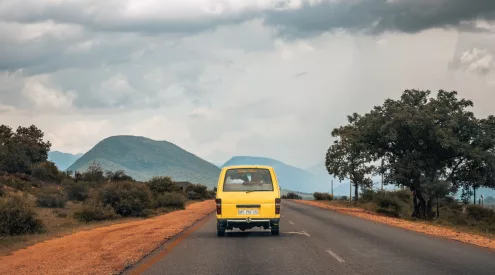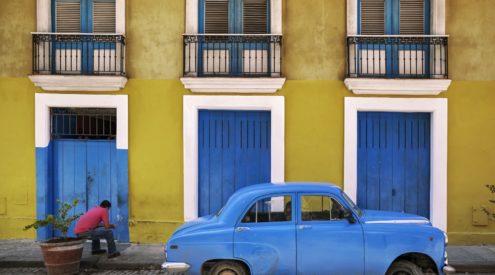Less than four years ago, on 30 May 2009, photographer Robert Tarr was present at the attempted rescue of 55 false killer whales stranded near Kommetjie in South Africa. On 24 March 2013 it happened again. ’18 whales stranded at Noordhoek’, came the call on his cellphone. From then, the sense of déjà vu was always present. But with one difference: this time there was a plan!
The day of buckets
By Rob Tarr
There were heavy moving vehicles for lifting and transporting; there were white cotton sheets to protect the whales; there were specially constructed lifting tarpaulins; the navy was on standby. And there were buckets, and buckets, and buckets.
The common denominator was the people: the caring, emotional, selfless folk who just wanted to help, and were prepared to spend the whole day or however long was needed to help the whales.
Reviewing my images from the day, I was bothered by all the colours: red wetsuits, yellow official bibs and vehicles, blue tarpaulins, multicoloured towels. So I have converted the images to monochrome – and feel that this also serves to somehow bring whale and helper closer together.
Those whales judged by the vet to be too weak to survive were euthanized that afternoon. It was always hoped that the outcome would be good for the five that were released, but sadly that did not happen. There will now be official assessments of the processes and logistics involved, and decisions will be made as to what to do next time around.
Experts around the world still don’t know why these group strandings happen, although theories abound. Prior to the 2009 stranding, there had never been such an event locally for 80 years, until March this year.
The false killer whale, pseudorca crassidens, is actually a dolphin, and despite its name, is not really closely related to killer whales. The more descriptive part of the name is crassidens, meaning thick tooth, and these carnivores are well equipped to feed on fish and squid. They can reach up to six metres in length, and average lifespan is around 60 years.
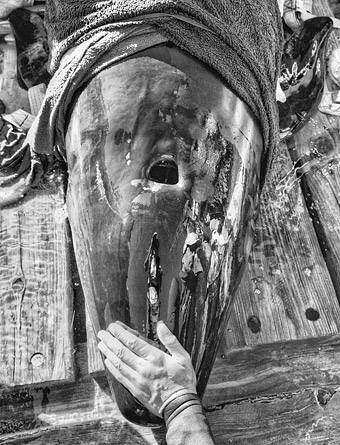
The ever-present human touch.
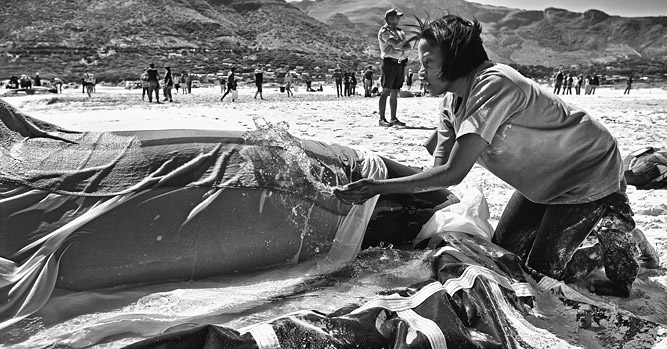
I was struck by the gentleness and caring nature of the helpers. This whale had a water-filled moat scraped out around it, that also provided relief for the pectoral fins.
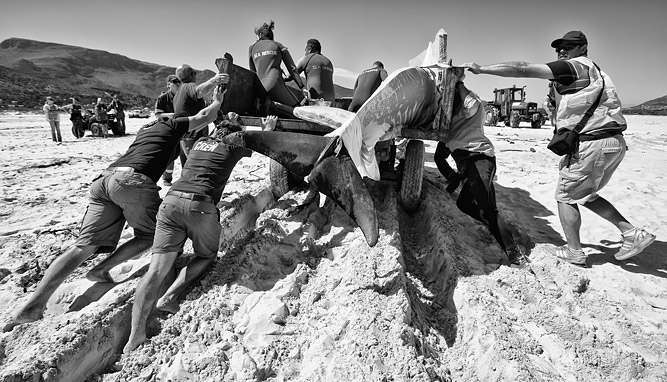
The soft sand of Noordhoek beach posed an unexpected logistical problem. As always though, helpers were always willing to come to the rescue.
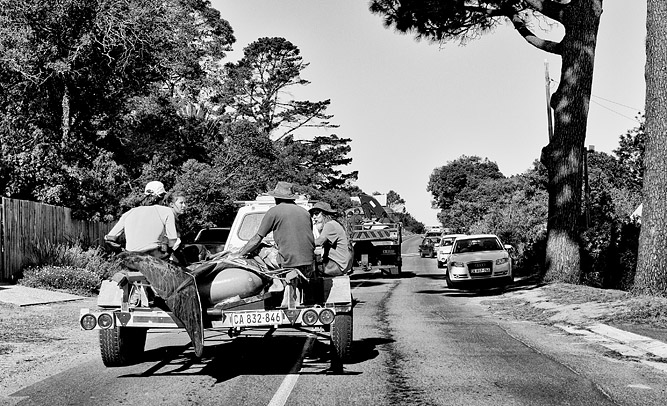
The whales were transported by road to the navy base in Simon’s Town. Here two travel in convoy. A traffic police escort ensured a smooth ride in minimum time.
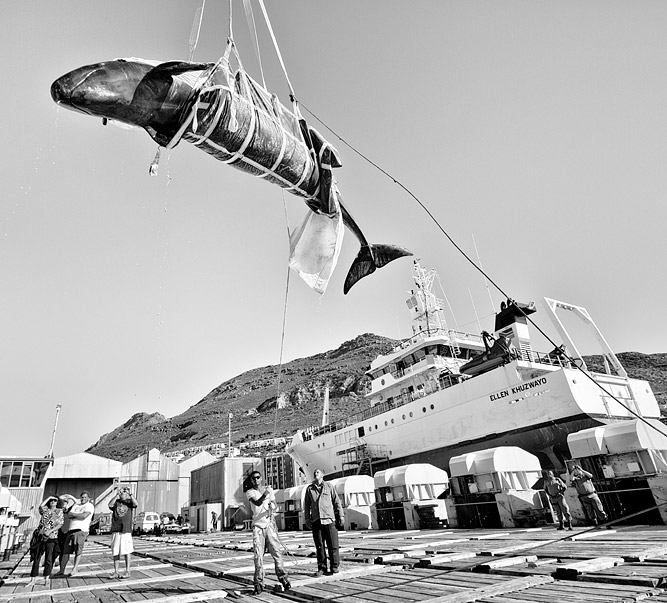
The whales brought in on the large trucks had to be high-lifted over the surrounding structures,onto the synchro lift.
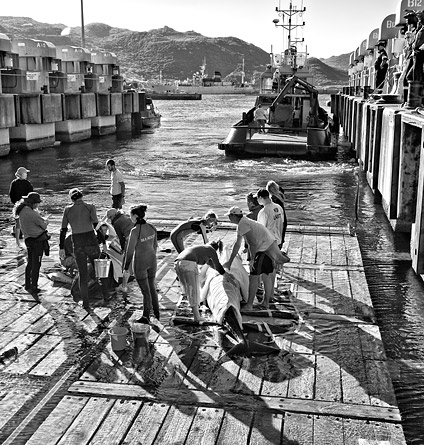
The synchro lift was then lowered down to water level enabling the whales to lie in shallow water before being lifted onto the tugs.
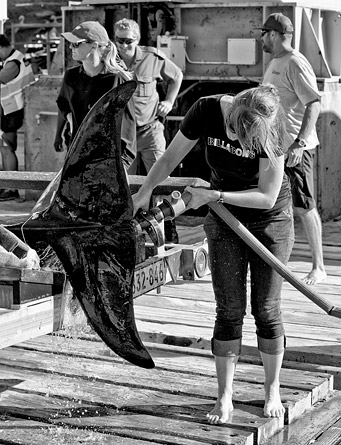
In the naval base, fire hoses took the place of the buckets in keeping the whales cool and wet.
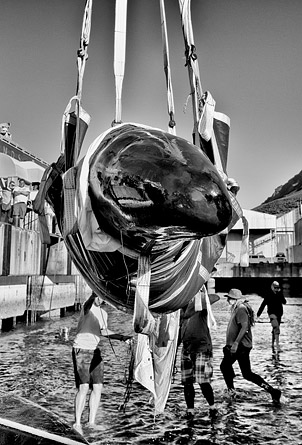
The whales were then moved onto the tugboats.
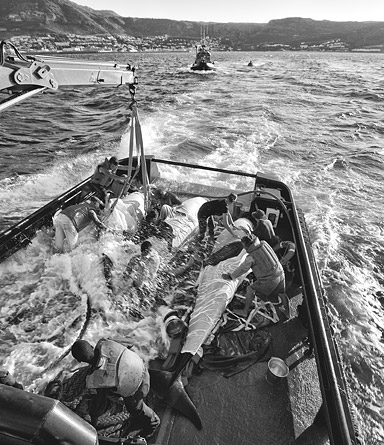
The trip out on the tugs was not for the faint-hearted – the low stern deck was constantly awash in the rough seas.
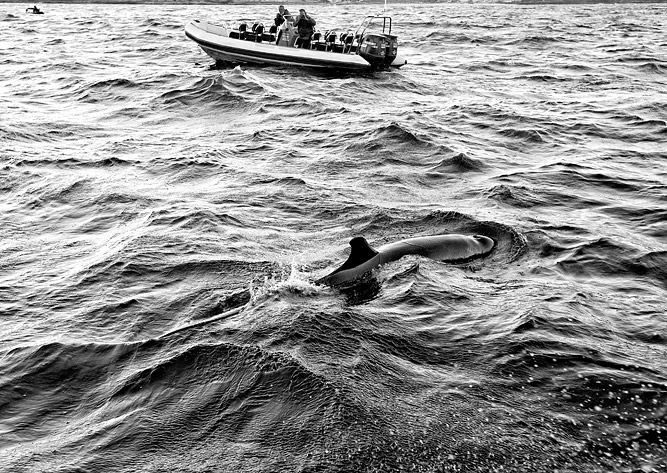
At last we were able to witness the whales swimming freely in the ocean again. The atmosphere was euphoric.
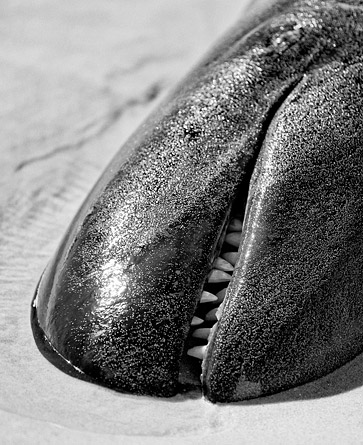
But sadly, within 24 hours, all the released whales had re-beached and either died naturally or had to be euthanised.










